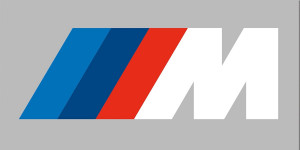Hybrid: This means the successful candidate is expected to report to their primary location (Warren, MI) three times per week, at minimum.
Relocation:
This job is not eligible for relocation benefits. Any relocation costs would be the responsibility of the selected candidate.
The Role:
The Vehicle Mechatronics Embedded Controls (VMEC) organization is responsible for designing, developing, and deploying embedded software and controls for all vehicle systems and components that enable vehicle motion, access, vision & visibility, and occupant position, protection, and comfort.
As the global voice for software technical expertise at the component and subsystem level, this role establishes and maintains a clear strategy for software architecture, diagnostics, and occupant protection subsystems. It ensures reuse, scalability, and technical excellence of software solutions across programs. The expert collaborates with execution, performance, and support teams to drive common implementation of strategies, strengthen software development practices, and promote technical knowledge across the enterprise.
This position is seeking a high-performing independent software engineer with demonstrated expertise in embedded systems to develop robust strategies, guide software architecture, resolve complex issues, and deliver continuous improvements for the Sensing and Diagnostic Module (SDM), sensors, and Rollover and Pedestrian Protection, Passive Safety Body Features, and Automatic Occupant Suppression (AOS) software domains.
What You’ll do:
- The Technical Specialist will provide global leadership for Sensing and Diagnostic Module (SDM), Automatic Occupant Suppression (AOS), and Passive Body Safety software. This role requires deep technical expertise in embedded safety-critical software, with the ability to review code, analyze software architecture, perform static code analysis, and ensure compliance with functional safety and regulatory standards. The specialist will work directly with in-house teams and suppliers to ensure robust implementation, rigorous reviews, and continuous improvement across all programs.
- Conduct software benchmarking / evaluations for Sensing Diagnostic Module, Automatic Occupant Suppression and Passive Body Safety functions.
- Define, review, and optimize software architecture, interfaces, and reuse strategies for SDM, AOS, and Passive Body Safety.
- Perform static and dynamic code analysis reviews, ensuring MISRA compliance, memory efficiency, and timing determinism.
- Review and approve software design/code peer reviews, identifying systemic or integration issues early in the lifecycle.
- Maintain and evolve global software requirements with traceability to implementation and test cases.
- Create and maintain best practices repositories for coding standards, design patterns, diagnostics handling, and error management.
- Lead root cause analysis of software issues across development, validation, and vehicle environments (including PRTS and plant builds).
- Approve Engineering Change Requests (ECRs) tied to software content and validate impact on safety and compliance.
- Collaborate with validation to define and review test coverage metrics for SDM, AOS, and Passive Body Safety software.
- Ensure compliance with functional safety and regulatory requirements (FMVSS, NCAP, GTRs) through software-level controls and diagnostics.
- Support toolchain qualification and static code analysis tools for supplier and in-house teams.
- Guide global software working groups for SDM, AOS, and Passive Body Safety, ensuring alignment and reuse across programs.
- Provide technical consultation to software DREs, PDTs, and program teams on coding practices, architecture decisions, and diagnostics strategies.
Your Skills & Abilities (Required Qualifications)
- BS in Computer Science, Computer Engineering, or Electrical Engineering.
- Minimum of 6+ years of experience in developing, integrating, and delivering embedded software for automotive electronic control systems
- In-depth knowledge of microprocessor-based controllers and vehicle network architectures (CAN, CAN FD, LIN, Ethernet)
- In-depth knowledge of software requirements engineering, including DFMEA, hazard analysis, and traceability methods
- In-depth knowledge of embedded software development, testing, integration, and associated toolchains (ETAS, Vector, DaVinci, or equivalent)
- Strong understanding of AUTOSAR architecture, real-time operating systems (RTOS), and basic software (BSW) layers
- Thorough knowledge of software verification and validation processes, including SIL, HIL, and bench-based validation
- Thorough knowledge of software release, build, and configuration management processes (Jenkins, Git, Jira)
- Highly developed oral and written communication skills, capable of clearly articulating technical solutions across global teams
- Demonstrated ability to work cross-functionally across software and systems teams within Electrical and other SMTs
- Demonstrated problem-solving ability with strong analytical and debugging skills
- High level of interpersonal skills to influence, motivate, and guide software teams across multiple ECUs and suppliers
- Very high level of analytical and architectural problem-solving skills for complex software integration issues
- Experience in Passive Safety or Occupant Protection software systems (SDM, AOS, ODS, RSR)
What Will Give You A Competitive Edge (Preferred Skills)
- MS in Computer Science, Computer Engineering, or Electrical Engineering.
- 10+ years of experience in embedded software design and integration within automotive ECUs
- DFSS Black Belt Certification
- Certified SAFe Agilist or SAFe Practitioner
- Strong understanding of software maturity models, in-house vs supplier ownership strategies, and virtual ECU development (SDV)
Company Vehicle: Upon successful completion of a motor vehicle report review, you will be eligible to participate in a company vehicle evaluation program, through which you will be assigned a General Motors vehicle to drive and evaluate. Note: program participants are required to purchase/lease a qualifying GM vehicle every four years unless one of a limited number of exceptions applies.









